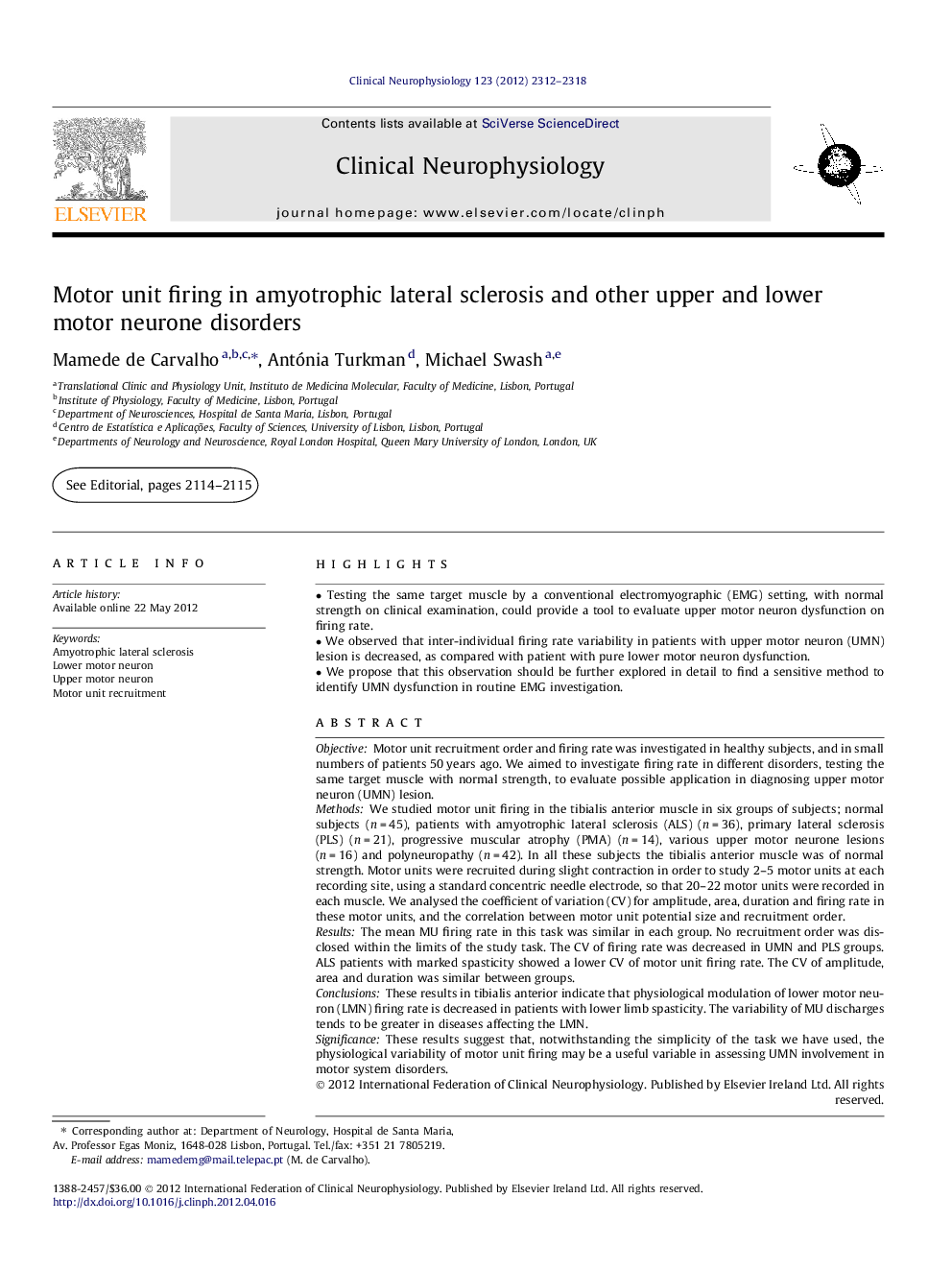| Article ID | Journal | Published Year | Pages | File Type |
|---|---|---|---|---|
| 3043124 | Clinical Neurophysiology | 2012 | 7 Pages |
ObjectiveMotor unit recruitment order and firing rate was investigated in healthy subjects, and in small numbers of patients 50 years ago. We aimed to investigate firing rate in different disorders, testing the same target muscle with normal strength, to evaluate possible application in diagnosing upper motor neuron (UMN) lesion.MethodsWe studied motor unit firing in the tibialis anterior muscle in six groups of subjects; normal subjects (n = 45), patients with amyotrophic lateral sclerosis (ALS) (n = 36), primary lateral sclerosis (PLS) (n = 21), progressive muscular atrophy (PMA) (n = 14), various upper motor neurone lesions (n = 16) and polyneuropathy (n = 42). In all these subjects the tibialis anterior muscle was of normal strength. Motor units were recruited during slight contraction in order to study 2–5 motor units at each recording site, using a standard concentric needle electrode, so that 20–22 motor units were recorded in each muscle. We analysed the coefficient of variation (CV) for amplitude, area, duration and firing rate in these motor units, and the correlation between motor unit potential size and recruitment order.ResultsThe mean MU firing rate in this task was similar in each group. No recruitment order was disclosed within the limits of the study task. The CV of firing rate was decreased in UMN and PLS groups. ALS patients with marked spasticity showed a lower CV of motor unit firing rate. The CV of amplitude, area and duration was similar between groups.ConclusionsThese results in tibialis anterior indicate that physiological modulation of lower motor neuron (LMN) firing rate is decreased in patients with lower limb spasticity. The variability of MU discharges tends to be greater in diseases affecting the LMN.SignificanceThese results suggest that, notwithstanding the simplicity of the task we have used, the physiological variability of motor unit firing may be a useful variable in assessing UMN involvement in motor system disorders.
► Testing the same target muscle by a conventional electromyographic (EMG) setting, with normal strength on clinical examination, could provide a tool to evaluate upper motor neuron dysfunction on firing rate. ► We observed that inter-individual firing rate variability in patients with upper motor neuron (UMN) lesion is decreased, as compared with patient with pure lower motor neuron dysfunction. ► We propose that this observation should be further explored in detail to find a sensitive method to identify UMN dysfunction in routine EMG investigation.
